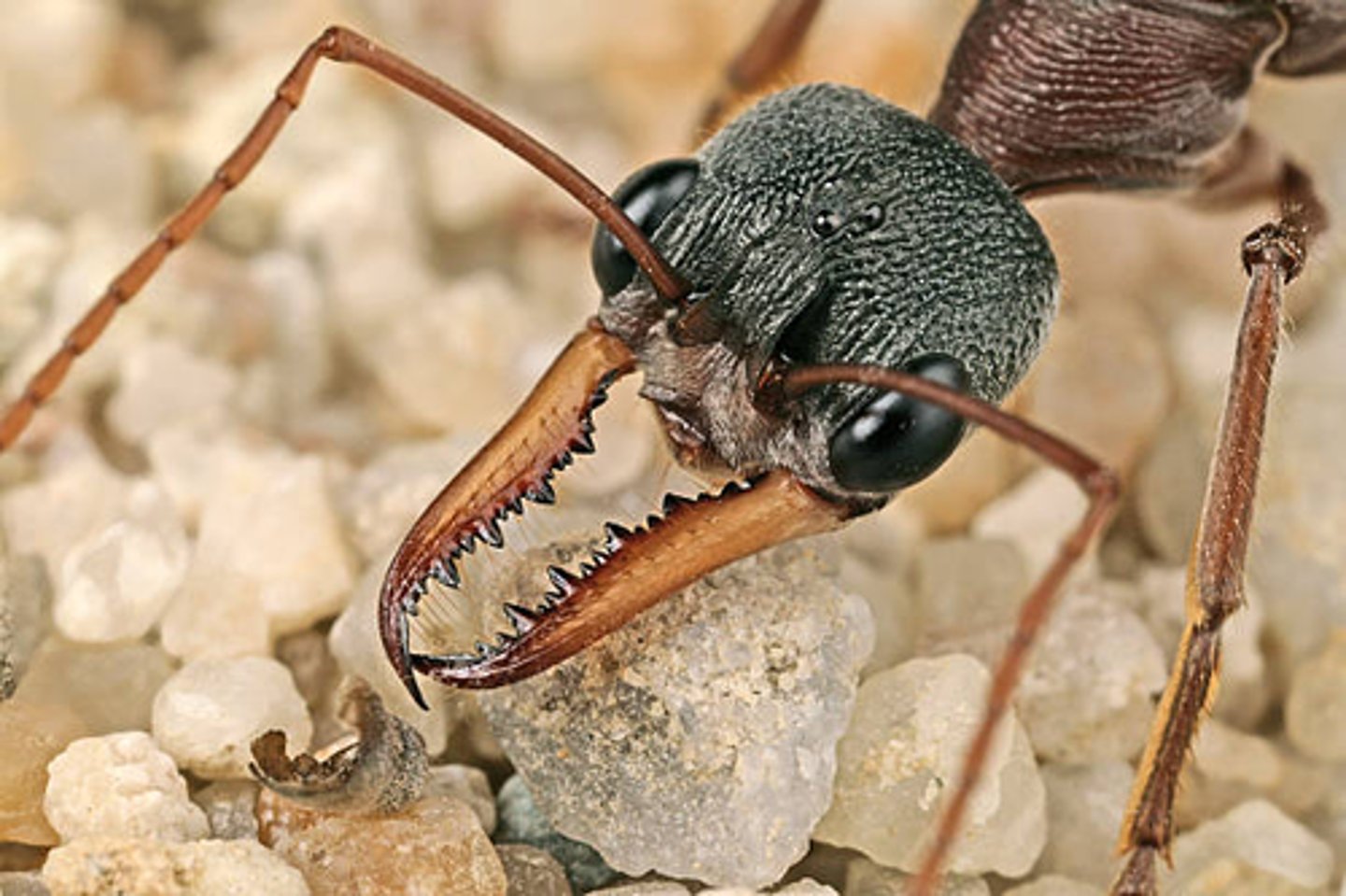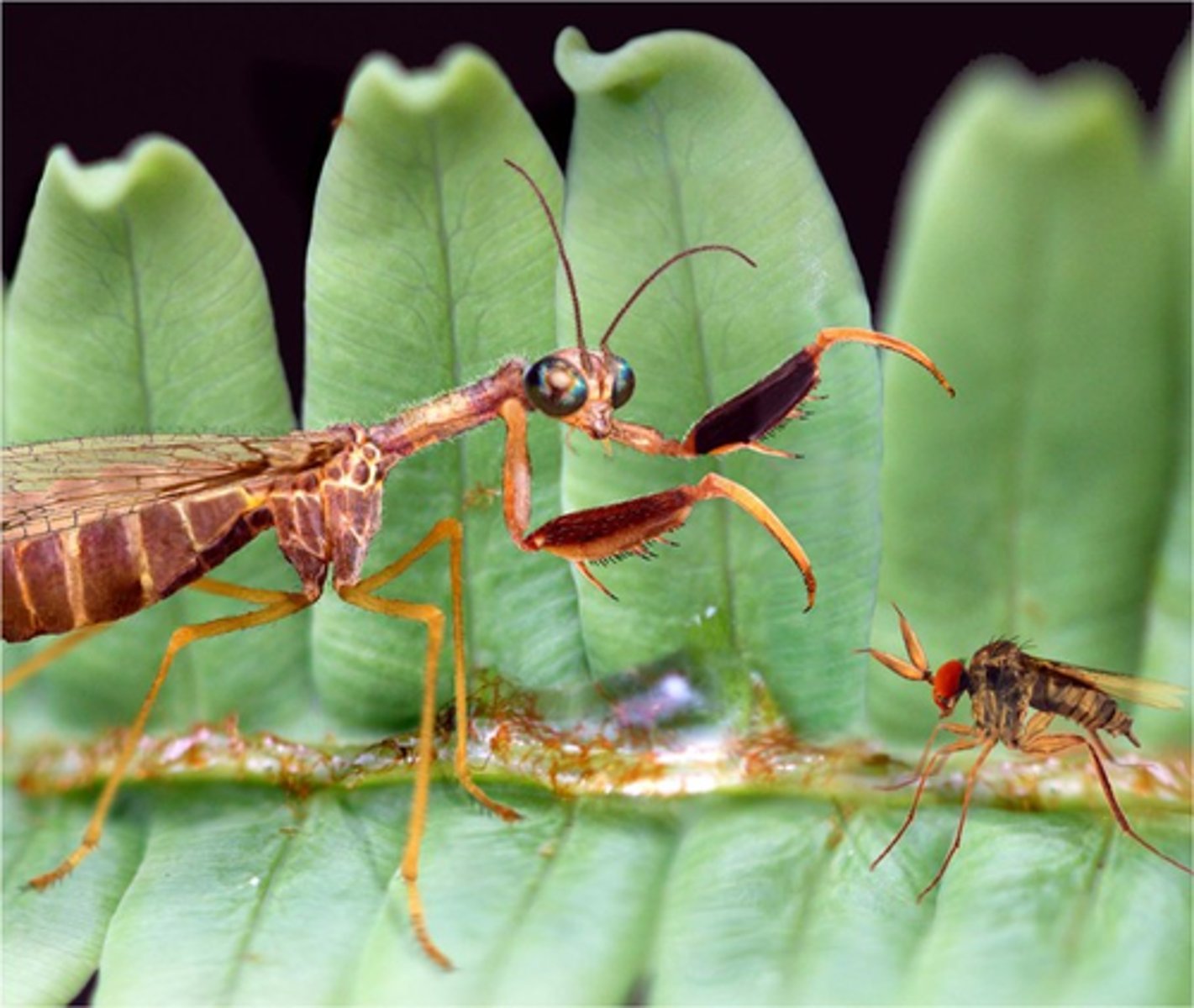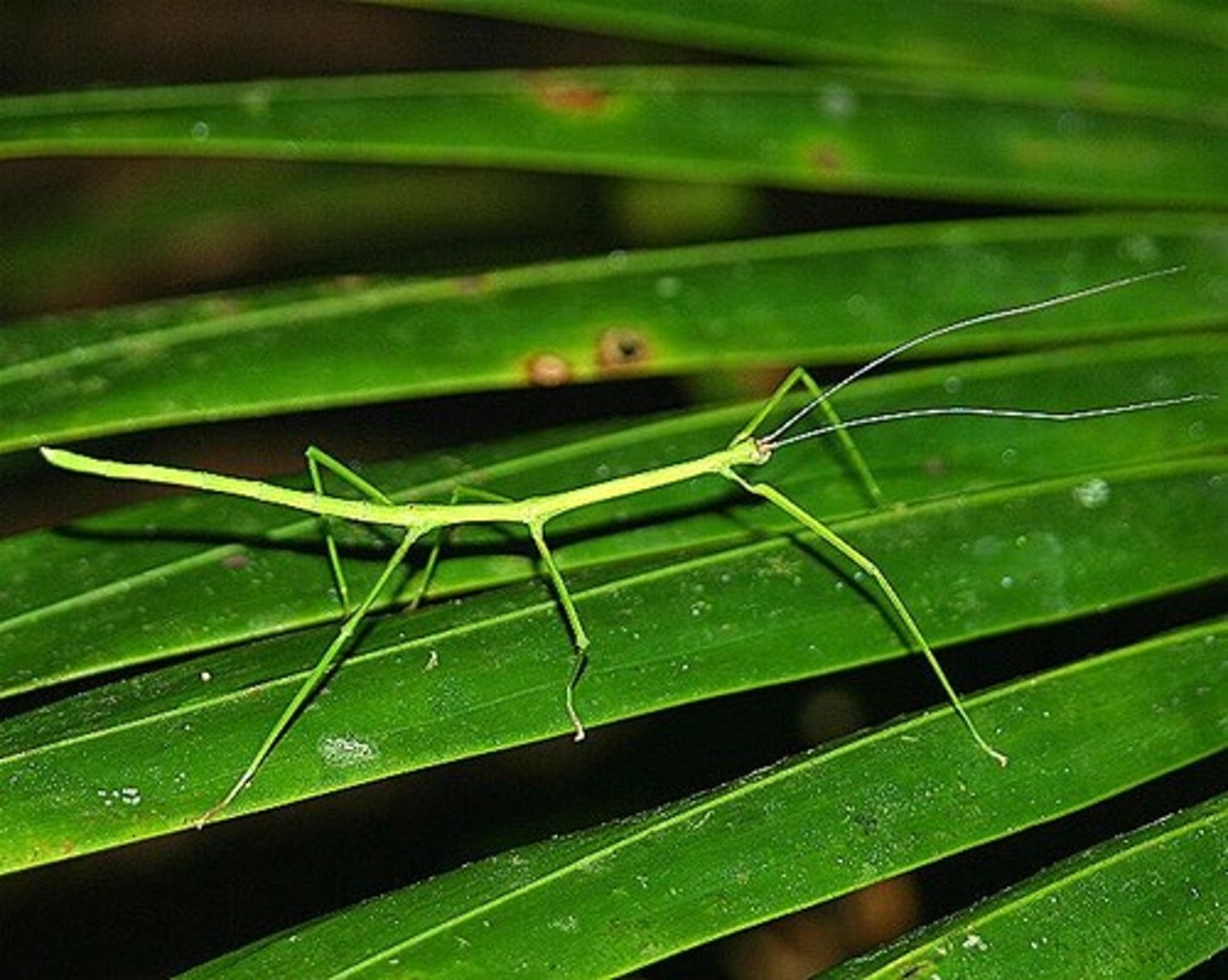Lab 5: Insect Predation
1/55
There's no tags or description
Looks like no tags are added yet.
Name | Mastery | Learn | Test | Matching | Spaced |
|---|
No study sessions yet.
56 Terms
What are insect communities structured by?
The biotic interactions between generalist insect predators and their prey
Generalist insect predators
Feed on any appropriately-sized arthropod they happen upon
In Celine's words: Feed on a wide variety of pest insects. They can adapt to changes in their environment and food sources
What are the three general feeding method used by insect predators to capture prey?
Mandibles, raptorial forelegs, unmodified legs
What do prey usually consist of?
Herbivorous insects
Mandibles
Biting jaws that grasp and kill their prey
Ex. Ground beetles, tiger beetles, and ant lion larvae

Raptorial forelegs
Specialized, enlarged, grasping front legs used for grabbing and subduing prey
Ex. Praying mantids, giant water bugs, ambush bugs

Unmodified legs
Standard walking legs without any specialized adaptations—essentially, "normal" legs for locomotion
- NOT raptorial
- Typically used by aerial predators consisting of grasping prey with all the legs
Ex. Dragonflies, robber flies, and scorpionflies

In this lab, what did students play the role of, and what was their goal?
Students play the role of three types of insect predators as they forage upon three potential prey species (represented by three different candies)
How many simulations did the experiment require?
6-8 simulations, each 15 seconds
What happens after each simulation to the prey?
Prey reproduce based on the number remaining, and predator numbers are adjusted to reflect mortality and reproduction
In response to strong predation pressure, what do prey species do?
They evolve defenses, such as poison
What is the "costs" of self-defenses?
Consequences may include slowed growth and reduced reproduction rates
- In the experiment, we see this when a prey type becomes poisonous, they suffer a lowered rate of reproduction, while the other times remain palatable and have higher rates of reproduction
When a poison-protected prey species exists in a community, what may happen to a predator/predators that suffers the greatest mortality?
Either...
1) The predator type that suffers the greatest mortality evolves to feed on poison-protected prey species, and all three predator types are maintained in the community
Or...
2) One or more of the predator species may go extinct
What are the three stages (and in-between) of predation?
Search
---> Recognition
Pursuit
---> Capture
Handling
What does "search" mean?
Predators search the environment for acceptable prey
What predator adaptations help improve search success?
- Better visual or olfactory acuity
- Limiting searches to prey-rich habitats
How does the searching stage end?
It ends with finding and then recognizing suitable prey
- Predators quickly learn suitable prey types and adapt to recognize prey and avoid inedible species
Learned avoidance
A behavior in which predators quickly learn to recognize poisonous or distasteful species by remembering adverse reactions from attempted predation events
In Celine's words: Predator recognize and avoid toxic prey because they came across them before and learned from big mistakes
- Helps improve predator's foraging efficiency
Search image
Developing a search image allows the predator to identify the most profitable prey or to avoid the least profitable prey
What does "pursuit" mean?
Once a suitable prey is recognized, predators pursue it
What predator adaptations help improve pursuit success?
- Locomotor adaptations such as running or flight speed
- Highly coordinated behavior
How does the pursuit stage end?
Involves physical contact, the capturing of the prey
What predator adaptations help improve capture success?
- Improved motor skills
- Appendage modification
What does "handling" mean?
When capture is successful, predators must efficiently handle their prey, by not letting it escape, and efficiently subduing and processing it
What does it mean when a predator processes a prey?
Processing can involve detoxifying any defensive compounds, as well as eating and digesting
How does eating and digesting affect the predator?
It takes time and limits when the predator hunts again
What types of prey does natural selection favor?
Individuals that are more difficult to find, capture, subdue, and consume
What are some adaptations against predation?
Coloration, behavior, morphology, and physiology
Ex. Some species are nearly invisible against the background
Ex. Some species are so heavily armored that most predators cannot subdue them
Ex. Some species have spines and may have some form of chemical defense
Describe the chemical defense that ladybird beetles have
They leave a yellowish, strongly smelling fluid on your hand if you handle them roughly
T/F For the potential predator, the recognition of potentially dangerous prey is innate
False
It is NOT innate.
Predators must learn to associate bad taste or illness with eating a species that possesses memorable characteristics
Why are the interactions between predators and prey considered complex?
These interactions change through evolutionary time as predators and prey adapt to the environment and each other
Prey species may vary in their ability to create and express chemical defenses. What are the costs and benefits associated with this ability?
Costs: Lead to a reduction in growth and reproductive rate.
Benefits: Advantage in protection when predators are abundant
What do predators vary in the ability to do?
Find, capture, subdue, and consume prey
Sometimes when a prey species becomes more toxic, only one predatory species can overcome its defenses. If that predatory species specializes on the toxic prey species, what happens to their interaction?
The predator selects for the prey to become more toxic, which in turn selects for the predator to be better able to overcome the more toxic prey
Co-evolution
When there is a tight association of mutual selection pressures acting on two or more species
- This is seen in the back and forth selection that can result in a tight linkage between a predator and prey species
Batesian mimicry
When a non-toxic prey mimics or looks the same as a toxic prey
- Insect predators that became ill from eating poisonous prey can learn to avoid non-toxic prey that exhibit Batesian mimicry
What keeps toxic prey from being able to have exponential growth?
Some insect predators have adapted to feed on prey that are poisonous
How do poisonous prey acquire their toxins, and what is the consequences?
They acquire their toxins from the plants they consume, but the cost to eating such food is slow growth and reproductive rate of the prey
What are intrinsic factors that constrain predator ability?
- Limited time available for prey searching
- Limited stomach size
- Time needed for digestion
"Intrinsic" = Something is natural or comes from within
What are extrinsic factors that constrain predator ability?
- Competition with other predators
- Environmental disturbances
"Extrinsic" = Something added or comes from the outside
Scramble Competition
Predators do not directly interact with one another
What conditions result in predation that is scramble competition?
When there are MANY predators and ABUNDANT prey available, the predators capture as many prey as quickly as possible
Interference Competition
Predators interact directly
What conditions result in predation that is interference competition?
When there are MANY predators but LIMITED prey availability, and thus competing predators must interact directly, leading to injuries or limited predatory success as a result
What were the prey in our simulation?
Jolly ranchers, Skittles, M&M's
What was the initial population of prey, and what was carrying capacity?
Initial population: 50
Carrying capacity: 200
What were unmodified (grasping) legs represented as?
Forks
What were raptorial legs represented as?
Spoons
What were mandibles represented as?
Knives
What type of symbol (-/-, -/+, +/+, 0/+) is predation?
-/+
What type of symbol (-/-, -/+, +/+, 0/+) is competition?
-/-
What type of symbol (-/-, -/+, +/+, 0/+) is parasitism?
-/+
What type of symbol (-/-, -/+, +/+, 0/+) is mutualism?
+/+
What type of symbol (-/-, -/+, +/+, 0/+) is commensalism?
0/+
Red Queen Hypothesis
Both predator and prey adapt but one will not completely "win over the other"
- Falls under coevolution
Evolutionary arms race
Coyote gets faster or better coordination, rabbit becomes more camouflaged, faster, or inhabits a new niche that coyotes can't access